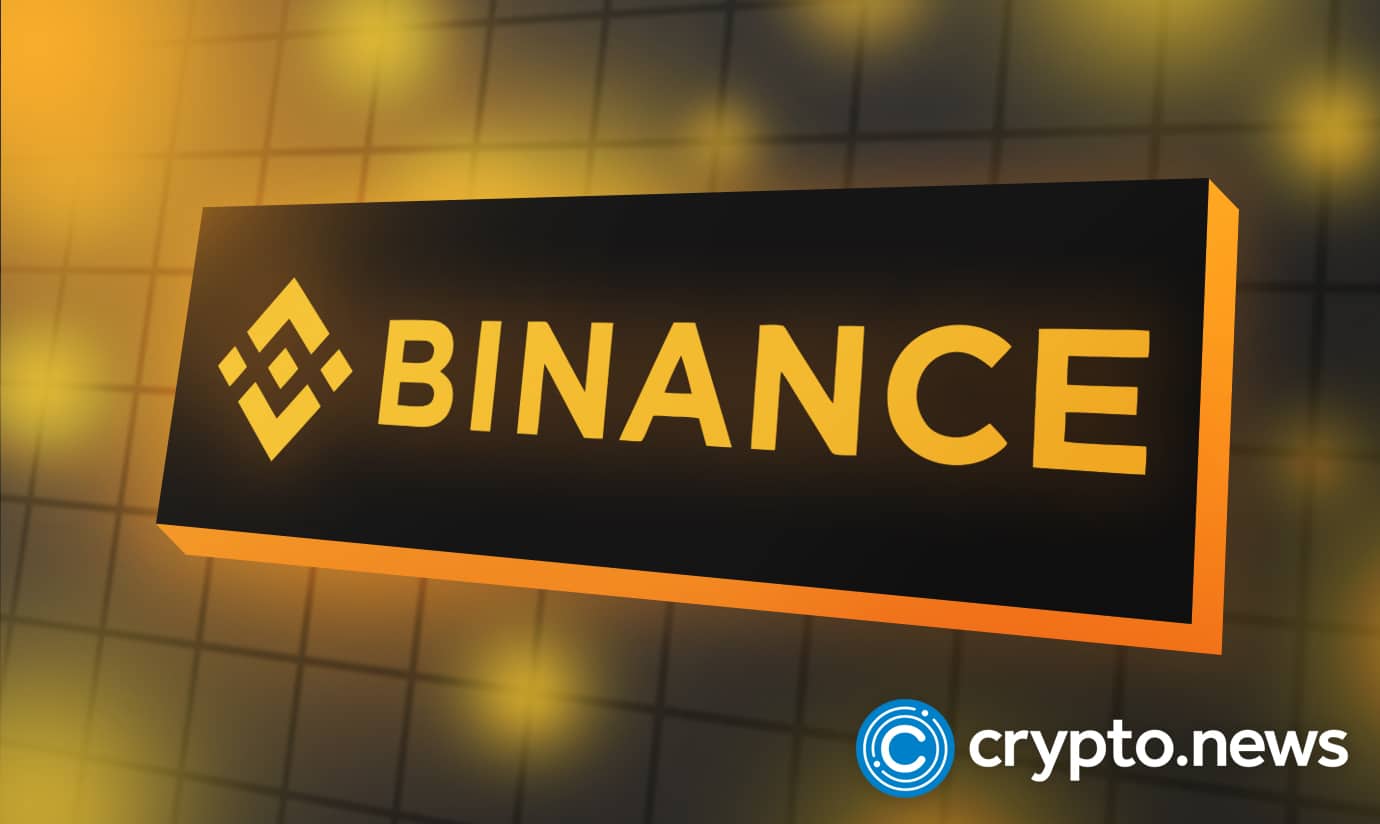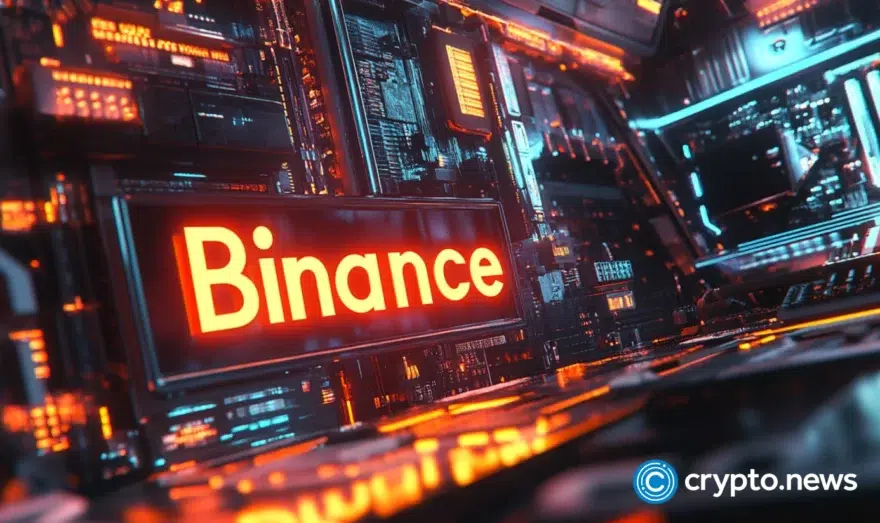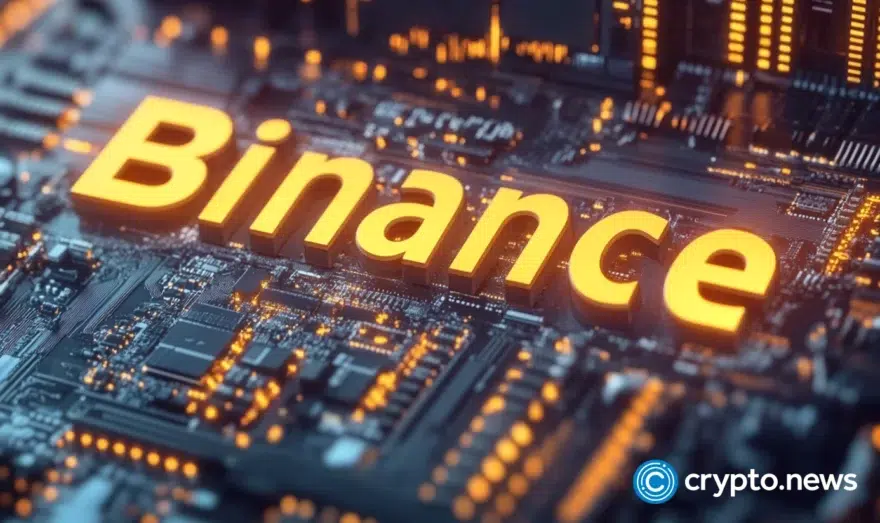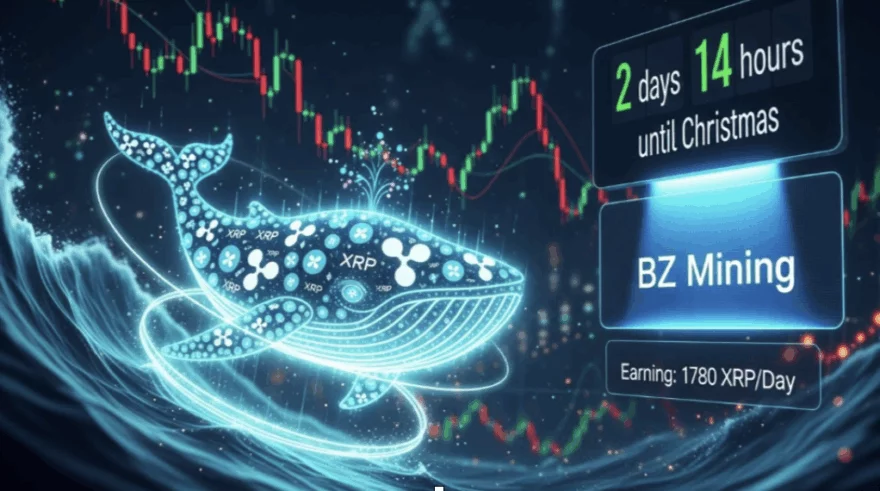Binance report sheds light on blockchain industry

Binance released a report that looks back at 2022, and some of the important trends emerging in the blockchain space for 2023.
It’s no secret that 2022 was a dreadful year for global markets due to the ongoing Russia-Ukraine war, inflation fears, falling capital markets, and persistent macroeconomic trepidations.
As a consequence, central banks throughout the globe started to increase interest rates to curb inflation and reduce the pace of economic growth. This macroeconomic pressure deterred established asset classes and exerted significant pressure on emergent asset classes, including cryptocurrencies.
The economic situation leading into 2023 has presented several key themes. In January, Binance Research, the research arm of cryptocurrency exchange Binance, released a report identifying the important themes for 2023 while providing a brief overview of 2022.
Let’s delve deeper into the report and understand what lessons 2022 taught us and how those lessons can pave the way forward for increased crypto adoption, better regulations, and foresight.
An eventful year for Layer 1 protocols
Layer 1 refers to the blockchain’s foundational architecture. Layer 1 protocols, sometimes known as “the mainnet,” have distinct capabilities, such as the capacity to execute and finalize transactions on its own chain. Examples of layer-one blockchain networks include bitcoin and ethereum.
Ethereum
2022 was a busy year for Layer 1 protocols. Ethereum (ETH) completed “The Merge” — the move from proof-of-work (PoW) to proof-of-stake (PoS) — in September 2022. Since validators now protect the blockchain, ethereum’s power consumption has been slashed by 99.99%.
Strikingly, ethereum’s transition to PoS has been reported to save 0.2% of world energy use, according to Binance. Meanwhile, the Shanghai Upgrade, which will allow users to withdraw staked ether in the coming months, will be the next phase in ethereum’s journey.
BNB Chain
BNB Chain (formerly Binace Smart Chain) had a pretty splendid 2022, with excellent performance throughout decentralized finance (DeFi) and continuing progress with on-chain metrics, and daily transactions clocking 3 million per day in 2022, second only to solana (SOL).
Solana
Solana (SOL) continued to face performance difficulties and outages throughout 2022.
Furthermore, considering the public endorsement and link between FTX, Alameda, and the Solana ecosystem, the baffling collapse of FTX caused a lot of bad press for Solana. Unsurprisingly, solana and ecosystem projects suffered considerable losses in market capitalization and DeFi market indicators.
Meanwhile, solana found solace in NFTs. Binance reported that solana NFTs were second only to ethereum in sales until 2022, ranking third in all-time sales.
Other Highlights
- Tron (TRX) had a tremendous 2022, particularly in the DeFi arena, with the debut of USDD, Tron’s algorithmic, USD-pegged stablecoin. Even though USDD was launched in the wake of the Terra-UST crash, it performed well and has been crucial in helping Tron remain at the top of the DeFi total-value-locked (TVL) rankings.
- Avalanche (AVAX) underwent a rather difficult 2022, with its share of the DeFi market dropping from 6% to 2% and an even larger drop in daily on-chain indicators. Between Jan.1 and Dec.31, daily transactions on Avalanche decreased from 500,000 to 100,000, while daily active addresses decreased from 75,000 to 25,000, causing concerns for the network.
- In 2022, two new layer-one protocols were also introduced. Aptos, a PoS blockchain platform based on the Move programming language, deployed its mainnet in October, and Sui, a permissionless blockchain platform, is all set to do so shortly.
Layer 0 blockchains paving the way
Layer 0 protocols serve as the foundational layer for layer 1 blockchain networks and applications, and are one of several solutions to address industry concerns like scalability and interoperability. Examples of Layer 0 blockchain protocols include Cosmos (ATOM) and Polkadot (DOT).
Cosmos
Binance reported that Cosmos (ATOM) on-chain activity had been gradually expanding, with 53 IBC-enabled chains aggregating $9.3 billion in market capitalization inside the ecosystem.
The Cosmos network will be upgraded during the next several months.
The Lambda Upgrade will be released in Q1, including enhancements to the Cosmos SDK and the addition of a liquid staking module. The Epsilon and Gamma improvements, which will concentrate on interchain security, will be released in Q2 and Q3 this year.
Polkadot (DOT)
Polkadot scored a significant milestone in 2022 with its Cross-Consensus Message Format (XCM) debut. XCM is a cross-chain communication language that enables parachains to exchange messages in a trustless and safe way.
The various separate layer-1 blockchains operating in parallel inside the Polkadot ecosystem are parachains (on both the Polkadot and Kusama Networks).
While the release was significant, XCM is just a language and cannot exchange messages. XCMP, the messaging technology, is currently under development.
2022: The year layer 2 takes off
A layer two framework or protocol is developed on top of an existing blockchain system. The primary purpose of these protocols is to address the cryptocurrency networks’ transaction speed and scale issues. The top layer two platforms include Polygon (MATIC), Optimism (OP), and others.
Since late 2021, L2 activity has rapidly increased, with Optimism and Arbitrum leading the drive. Binance revealed that L2 TVL increased by 119% (in ETH) across 2022.
Furthermore, in October 2022, L2 TPS finally exceeded Ethereum L1 TPS for a sustained period, which is still the case. At the end of 2022, the average L2 TPS was 17, but Ethereum’s was closer to 10.
It’s worth noting that while one significant L2 token, Optimism, launched its token OP in 2022, the bulk of other L2 protocols remained token-less.
Now, let’s take a deeper look at how some of the most important platforms have fared:
Polygon
Binance revealed that Polygon (MATIC) set a new milestone in unique addresses in 2022, with over 207 million unique users.
Meanwhile, the number of daily active addresses reached an all-time high of over 780,000 in October. Daily Transactions, on the other hand, dropped during the year but remained at a solid 2.6 million transactions each day.
With multiple high-profile partnerships, non-fungible tokens (NFTs) were a primary growth driver for Polygon until 2022.
So far, Reddit has been the most noteworthy of them, with millions of Polygon wallets generated to collect the NFTs. Binance stated that, at the time of writing, Polygon harbored over 5.7 million NFT holders, including 4.2 million single NFT holders, demonstrating the broad holder base.
Starbucks also announced a notable alliance with Polygon to construct their new Starbucks Odyssey NFT-drive loyalty program, taking Polygon’s success story to new heights. This is scheduled to begin in 2023.
Furthermore, Polygon collaborated with Meta to enable NFT minting, showing, and selling on Instagram, which will likely be extended this year.
Arbitrum
2022 was a banner year for the company, with the TVL of its main product, Arbitrum One, increasing 171% from 681,000 ETH to 1.8 million ETH.
Meanwhile, daily transactions and unique addresses also demonstrated a high upward trend, increasing 560% and 618%, respectively, during 2022.
Arbitrum launched a second chain, Arbitrum Nova, in 2022, after the debut of their initial product, the Arbitrum One Rollup chain. This is intended to be more appropriate for high-transaction, cost-sensitive use cases, and it saves money using a Data Availability Committee (DAC).
Optimism
Optimism also saw a tremendous increase during 2022, with TVL increasing by 580% from 138,000 ETH to 938,000 ETH.
The on-chain activity was also spectacular, with daily transactions increasing by 1,467% and unique addresses increasing by 1,486%, respectively.
The Optimism Collective was also introduced in 2022. Token holders and other Optimism-aligned partners run the OP Collective, which votes on protocol improvements and engages in community-oriented behavior. The OP token was distributed as part of an airdrop.
Stablecoins led the market growth in 2022
In May 2022, the collapse of TerraUSD (UST), an algorithmic stablecoin, wiped away roughly $40 billion in market worth between UST and LUNA.
Entities with UST exposure incurred massive losses, and institutional and ordinary investors felt the resulting contagion effect.
UST was the third biggest stablecoin at its height and possibly the most high-profile algorithmic stablecoin. Therefore, it is hardly surprising that trust in algorithmic stablecoins and their capacity to keep their pegs has suffered since UST’s downfall.
Nonetheless, although global crypto market capitalization fell 65% from $2.3 trillion to $795 million in 2022, the major reserve-backed stablecoins, USDT, USDC, and BUSD, fared better, with USDT falling 16% and USDC and BUSD increasing by 5% and 13%, respectively.
As predicted, volumes were much lower throughout the year, with USDT seeing the highest relative percentage reduction. Meanwhile, the three coins’ total stablecoin market share climbed from 81.3% at the end of 2021 to 91.7% at the end of 2022.
Meanwhile, after adverse market occurrences involving many centralized companies (including several CeFi lenders), there has been widespread demand for more transparency in the business.
Paxos (parent company of BUSD) and Circle (parent entity of USDC) regularly disclose monthly attestations of BUSD and USDC stablecoin reserves, respectively. Reserves in fiat currency or US Treasury bonds underpin both.
Governed by criticism, Tether finally withdrew the commercial paper from its reserves as part of its “ongoing efforts to promote transparency” in response to long-term opponents of USDT of Tether’s commercial paper holdings.
While Tether provides quarterly attestations and has stated that it will transition to monthly attestations this year, a reliable third-party audit will likely be critical in assuaging concerns about stablecoin reserves.
DeFi looking for a comeback after a terrible 2022
2022 proved to be a year of setbacks and turmoil for the DeFi sector. Binance stated that the total value locked (TVL) inside DeFi was roughly $40 billion, down more than 75% from the start of 2022.
Meanwhile, ethereum remained the dominating player in the DeFi field. While not matching ethereum’s peak 97% market share at the start of 2021, ethereum owned more than 60% of DeFi TVL in 2022.
BNB Chain was in second place, closely followed by Tron. Tron, a chain completely missing from top TVL rankings for a long time, has seen a significant surge in TVL due to its USDD algorithmic stablecoin, which offers high yields to attract users.
Decentralised exchanges reigniting the DeFi wave
Curve DAO remained the major decentralized exchange. Outside of Curve, Uniswap controlled the major DEX for ERC-20 tokens. Together, the two DEXs enabled more than half of the overall trade volume.
With 2022 being a successful year for BNB Chain, PancakeSwap also gained market share in the general DEX landscape and inside BNB Chain itself.
While DEXs have seen some acceptance, CEXs continue to command a large share of overall trading activity.
What’s happening elsewhere?
- In contrast to DEXs and lending protocols, liquid staking solutions witnessed a rise in TVL during 2022. Users can stake their tokens without locking up assets or managing staking infrastructure in liquid staking.
- The market slump also influenced the derivatives market. DeFi’s derivatives segment lost $1.88 billion in TVL in 2022. However, derivatives withstood the latest FTX collapse, with TVL remaining in a close range since July. Binance reported that derivative protocols contained roughly $1 billion in TVL, compared to $16 billion in DEXs and $40 billion in DeFi overall.
- In the history of crypto, 2022 was an unfortunate year for hacks; not only did it have the most reported hacks, but it also saw the highest value lost to hackers. Notably, DeFi-related attacks accounted for the vast bulk of the 2022 total. DeFi-related breaches accounted for 169 (88%) of the 192 notable hacks documented in 2022. Furthermore, out of the $3.57 billion lost in crypto attacks in 2022, DeFi-related thefts accounted for $2.57 billion (72.5%).
- NFT sales increased 10.6% to $21.9 billion in 2022 from $19.8 billion in 2021. This was mainly due to robust sales in the first half of 2022, when NFT sales totaled $18.3 billion (83% of total sales) from January to June. The NFT market saw a fairly uneventful second half as sentiment became negative and traders fled the market.
- The blockchain gaming sector faced significant challenges in 2022. The number of games increased 44% yearly, from 1,383 in December 2021 to 1,985 in December 2022. However, the total number of gaming-related transactions in 2022 was $11.5 billion, with the majority of transaction volume occurring in the year’s first half. During the market instability caused by the UST de-peg and the Three Arrows Capital collapse, transaction volumes witnessed the greatest month-on-month reduction in May 2022.
- In 2022, general interest in the metaverse fell gradually throughout the year. Along with the drop in interest, metaverse land sales also dropped dramatically. Popular Metaverse projects generated $1.7 million in land sales in December 2022, a 96% decrease from the beginning of the year.
Looking ahead: what to expect?
Given the lack of market activity, Binance suggested that DeFi and NFT initiatives could explore outside the crypto ecosystem for further growth options.
Meanwhile, between 2021 and 2022, the world witnessed significant progress toward better regulatory clarity. On the other hand, more regulatory certainty will be advantageous to the blockchain ecosystem in the long term.
Will cryptocurrencies continue to surge, crash, or entice investors down an unknown road shortly? Take a seat and relax – 2023 has only just begun!















